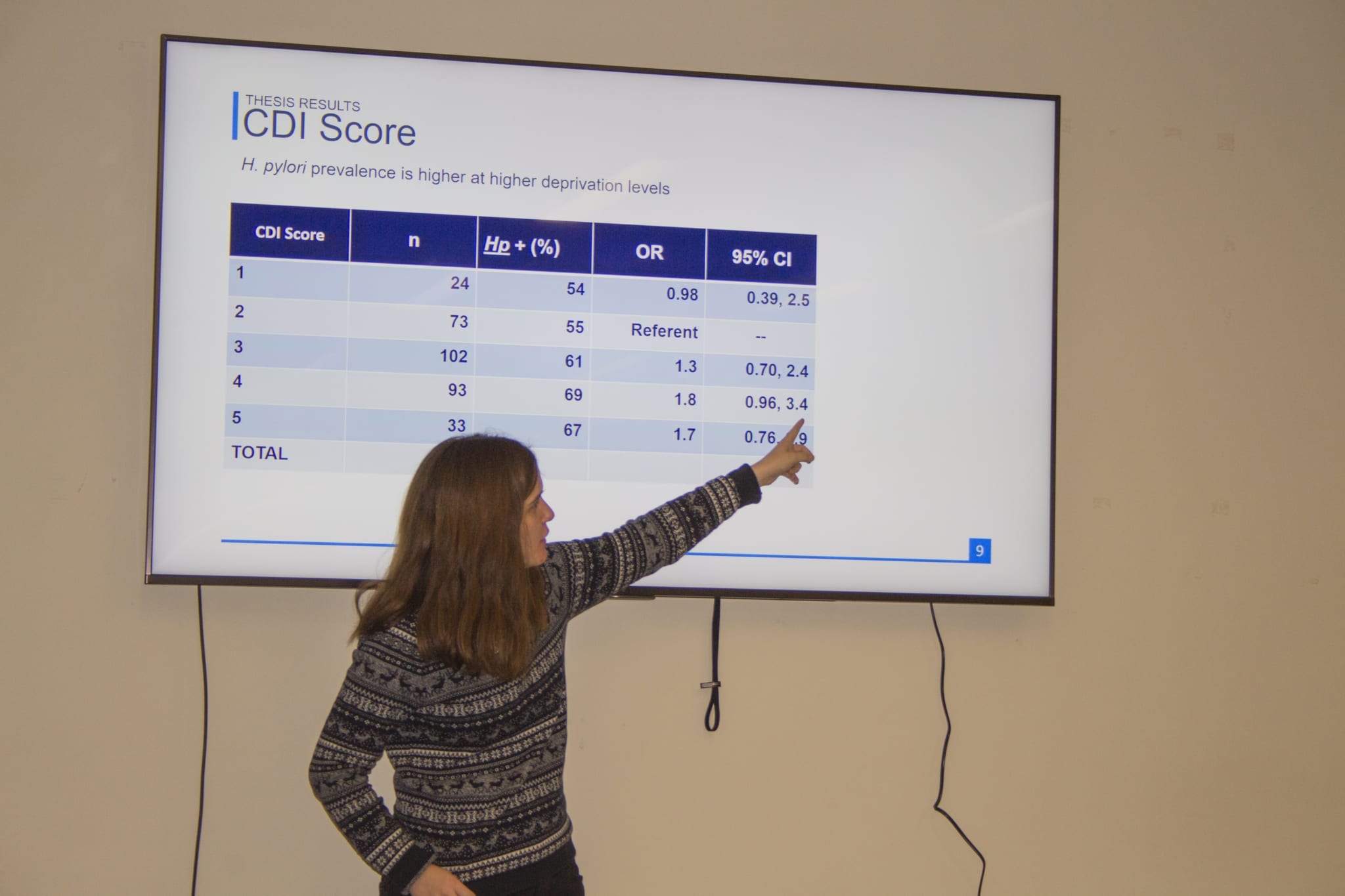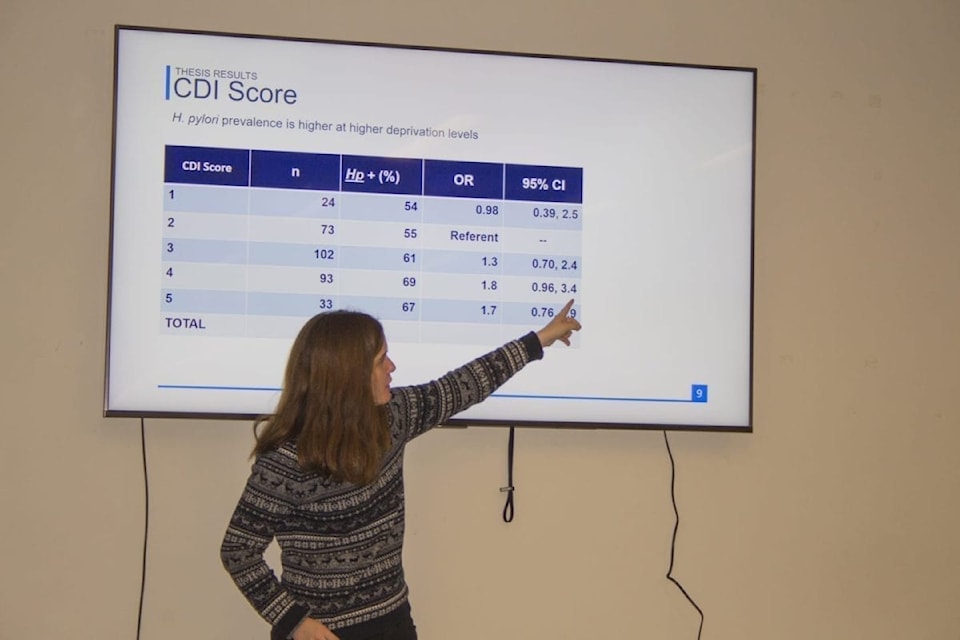
Residents in the Beaufort Delta have helped scientists at the University of Alberta shed a bit of light on a mysterious stomach bacteria estimated around 2000 to have infected at least half the human species worldwide.
Unlike much of the catalogue of micro organisms, Helicobacter pylori (H. pylori) was only discovered by science in 1982. Usually caught as a child, once H. pylori gets into someone's stomach it can stay there for decades. The presence of the bacteria causes a mild inflammation of the stomach lining, with symptoms varying wildly among people.
Most people do not have a reaction and never notice the infection, which could explain why the organism eluded science for so long. However, H. pylori infections are now thought to be responsible for 90 per cent of stomach ulcers and could also increase the risk of stomach cancer — in a very small percentage of people.
Other than being passed from person to person through stomach fluids, its not known why some people develop an H. pylori infection and others do not, other than it has a higher frequency in areas of low socio-economic status and also seems to be more frequent in the north.
"You can't use income to compare people. Somebody might have a low income, but live off the land, built their own home and live quite wealthy," said research manager Taylor Cromarty, who was discussing her research at the Aurora Research Institute Nov. 28. "Whereas someone could have a high income, but there might not be much around them to use it with. So I wanted to find a measure of socio-economic status that didn't use income and see if that worked in Northern Canada, and if that relationship was the same as we see elsewhere."
For her research, Cromarty took breath samples from research participants to test for H. pylori infection — after they drank a substance which the H. pylori breaks down in the stomach. The breath sample taken can then detect the CO2 produced by the bacteria and determine how much of the bacteria someone has.
She also surveyed 200 households, representing 350 participants, in their food security, noting that using income as a sole indicator of personal well-being is problematic. It makes more sense to look at food quality, since cost of living can affect how healthy an income is.
Instead, she used the Canadian Deprivation Index, which takes into account education, home ownership and food security to measure quality of life.
In her research, she found that the majority of people she surveyed were food secure. There also was a slight increase in H. pylori prevalence in those surveyed as sometimes and often food insecure, but in all three survey groups the bacteria was present in over half of the people sampled.
The next step is to nail down if there are other elements of socio-economic inequality that could be influencing prevalence of infections, like gender or living in a single-parent household. Final results will be interpreted with community groups.
Research was done through the CANHelp Working Group, which connects University of Alberta researchers with northern communities. Inuvik, Tuktoyaktuk, Fort McPherson and Aklavik are all partners in research with the group. It was initially started in Aklavik as a response from community leaders to H. pylori infections. Over the last 12 years, over 1,300 people have been screened for H. pylori infections in the Beaufort Delta.
Anyone concerned about H. pylori infection should speak to their doctor. Treatment usually involves three to four drugs for up to two weeks. However, the bacteria is a hardy creature — roughly 20 per cent of treatments do not work.
